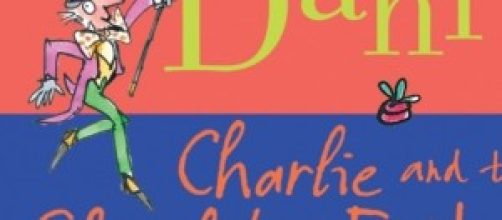2014 is the 50thanniversary of children’s classic Charlieand the Chocolate Factory, perhaps Roald Dahl’s best-known story. A bestseller since its publication, Charlie andthe Chocolate Factory has inspired various film versions as well as a hitstage musical: little wonder J.K. Rowling named it among her top ten booksevery child should read. It tells the story of theimpoverished boy Charlie Bucket who is one offive children to find a golden ticket to visit the magical chocolate factoryowned by the eccentric Willy Wonka.
Dahl wroteseveral drafts of Charlie and theChocolate Factory before he finished the one we know so well today.
The chapter titled“The Vanilla Fudge Room”, because deemed too wild and subversive, was cut fromthe final version published in the US in 1964. At its 50th anniversary, readerscan finally enjoy this lost chapter that has been published for the first timein the Guardian’s supplement.
“The Vanilla Fudge Room” was chapter five and featuresseveral changes that might come as a surprise to longtime fans of Dahl's work.For instance, in this early and undated draft there are 10 Golden Ticket winners insteadof five. Two of them, Tommy Troutbeck and WilburRice, get into trouble through their disobedience on the Vanilla Fudge Mountainfeatured in the chapter. Apart from this larger cast of characters, theexcerpt also reveals that Charlie originally went into the factory with hismother rather than his grandpa Joe.
Besides this missingchapter, Charlie and theChocolate Factory has recently been at the centre of a storm afterPenguin has used an image of adoll-like young girl on the cover of a new edition. While many critics claim that this image has echoes ofLolita and it is "creepy", “inappropriate” and “grotesque”, thepublisher strongly defends his choice.
“This new image for Charlieand the Chocolate Factory looks at the children at the centre of the story,and highlights the way Roald Dahl's writing manages to embrace both the lightand the dark aspects of life," said a statement from Penguin.
2014: new edition, new chapter and new cover. Charlie and Chocolate Factory is fiftyyears old this year but, like many other of Roald Dahl’s works, it somehow remainsa mysterious book, and as such even more fascinating.
It is a book that sold 10,000copies in its first week and has been adored by generations of children but atthe same time it is a “children's story thatalso steps outside children's”, as Penguin Press’s Helen Conford said. Theamazing, if not dangerously seductive ability of Dahl is to delve into thedepths of human nature and to twist everyday life into powerful and sometimesterrifying fantasies – both the new cover of Charlieand the Chocolate Factory and lost chapter “The Vanilla Fudge Room” do thiswell, perturbingly well. And this is perhaps why Dahl himself may well havebeen in favour.

